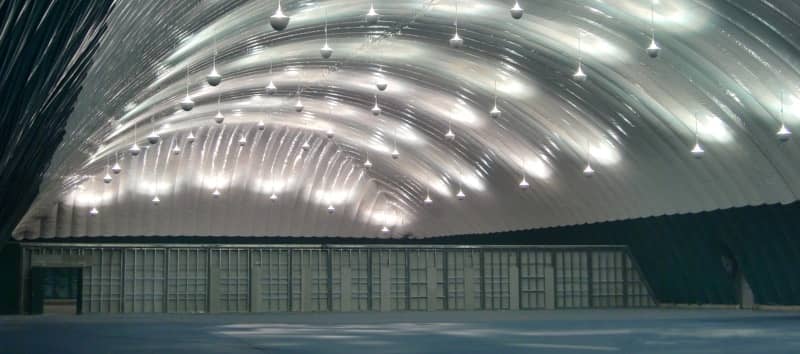 Architectural fabrics have become a more commonly used building material in the commercial space over the years, yet people are still hesitant to specify them over more traditional materials, such as brick and mortar. Below you will find four reasons why you should specify architectural fabrics for your next commercial building project.
Architectural fabrics have become a more commonly used building material in the commercial space over the years, yet people are still hesitant to specify them over more traditional materials, such as brick and mortar. Below you will find four reasons why you should specify architectural fabrics for your next commercial building project.
1. (Almost) Endless Design Possibilities
Tensioned membrane structures offer tremendous flexibility in regards to design. The intrinsic qualities of the fabrics, including elasticity and strength, can accommodate a variety of loads, thus furthering design capabilities. Architectural fabrics allow for unique aesthetics, both inside and out, allowing designs to reach new heights (both literally and figuratively).
Translucency
Translucency is a highly desirable trait in this day and age when it comes to the aesthetics of a space. Buildings can experience soft natural interior light during the day by utilizing fabric membranes - cutting down the need for artificial solutions. On the other hand, artificial light in the evenings can emit a beautiful glow throughout the space, allowing for buildings to stand out.
2. Highly Durable
Oftentimes, people assume that fabric membranes are not nearly as durable as other building materials and therefore overlook them during the design process. The opposite is actually true. Architectural fabrics can last anywhere from 20 to 40 years, depending on the fabric specified and can be applied in a variety of climates.
3. Minimal Maintenance Required
All buildings require some degree of maintenance during the course of their lives. However, tensioned membrane structures are on the lower end of the spectrum in terms of the amount of maintenance required. It is important to note that a maintenance plan should be implemented once a structure is built regardless of building material to ensure that the building lasts as long as you expect.
4. Cost Benefits
There are two distinct ways in which costs differ when building a tensioned membrane structure and a traditional commercial building: the overall cost of the project and additional energy savings.
Reduced Overall Costs
Architectural fabrics are lightweight materials and are generally used to create large, open spaces. As a result, the amount of steel and other support materials needed is reduced. Installations for this type of structure also vary in comparison to traditional buildings, with much less time being needed for site preparation.
Energy Savings
As mentioned before, the translucency of architectural fabrics decreases the need for artificial lighting during the daylight hours, thus resulting in less energy being used. Fabric structures can be designed to offer insulating properties as well, another helpful way to reduce overall operating costs of your building.
What other benefits have you found when building tensioned membrane structures? Share your thoughts in the comments.


